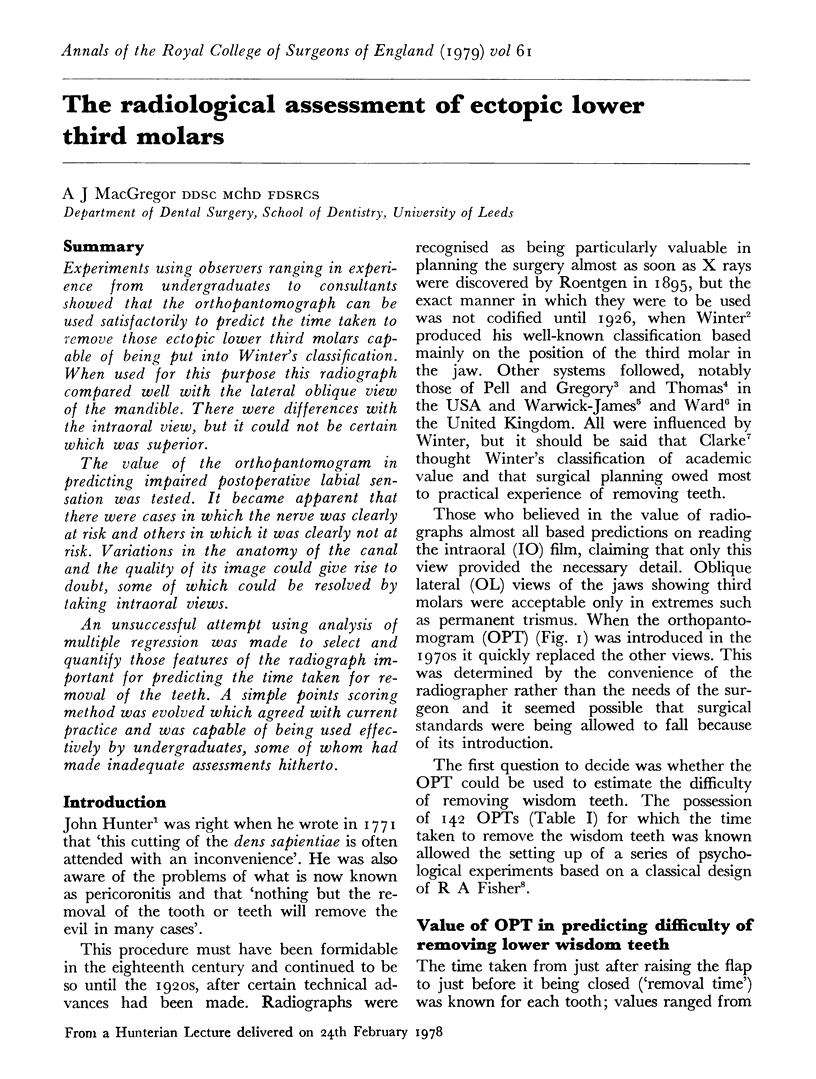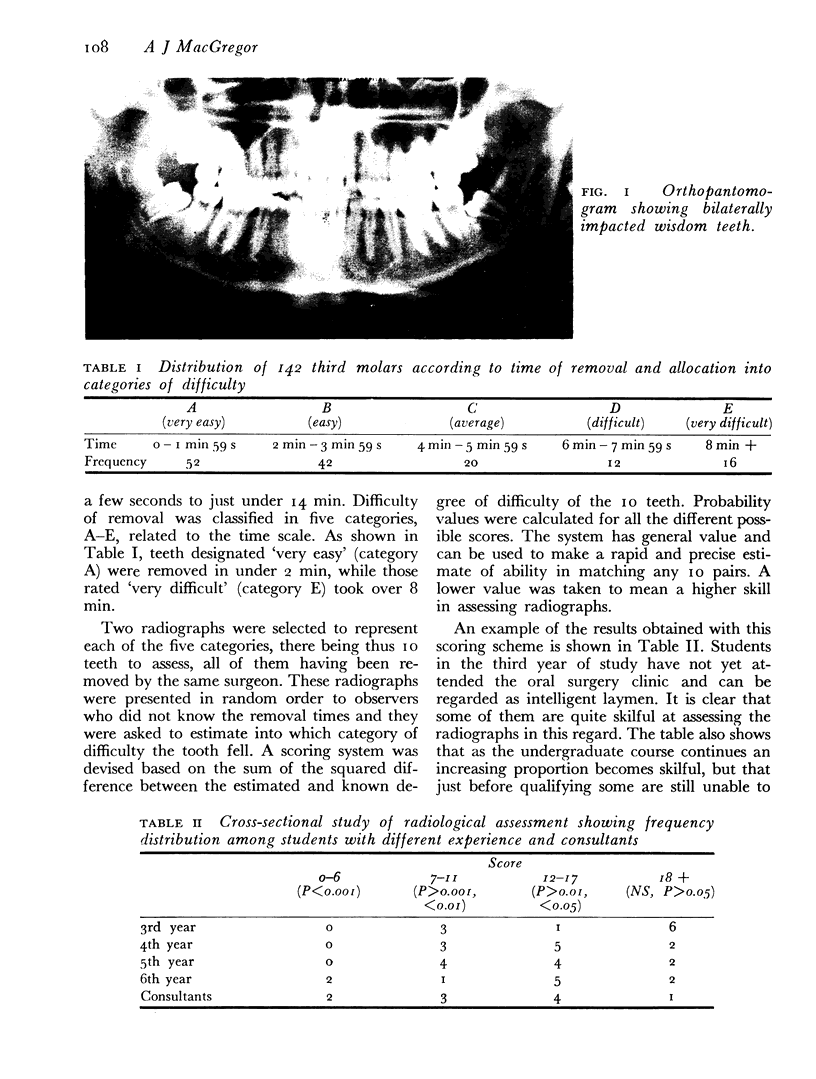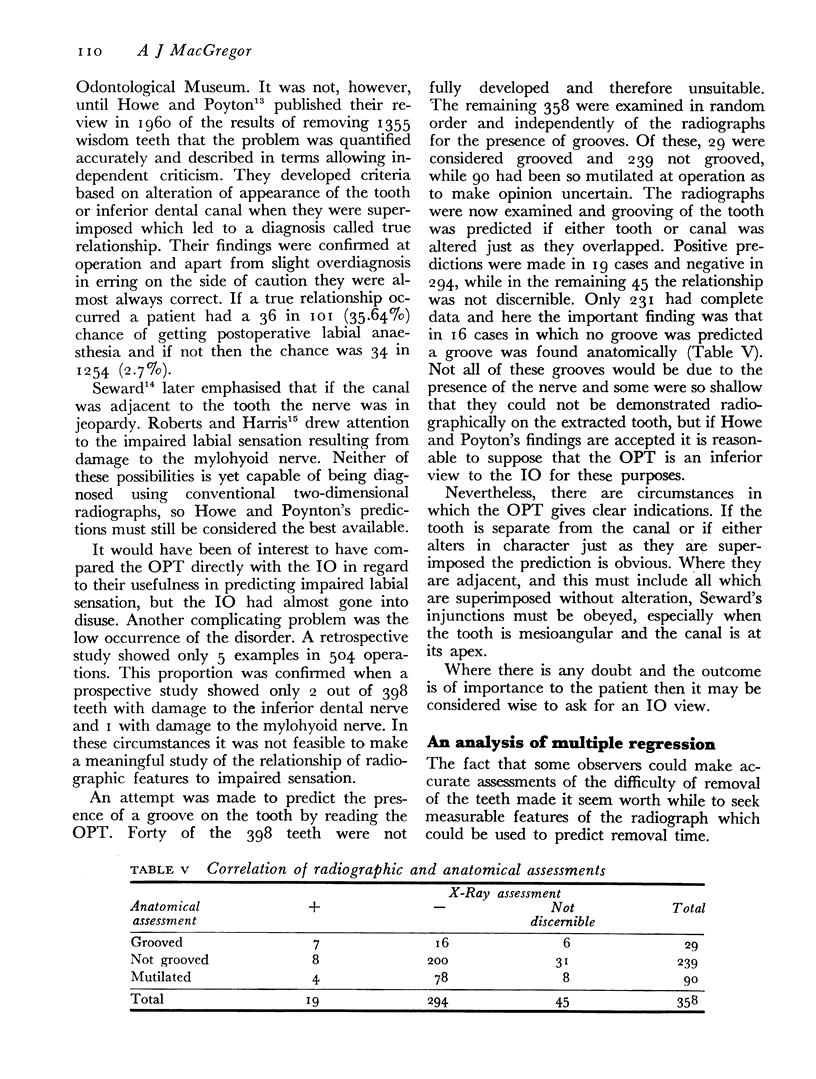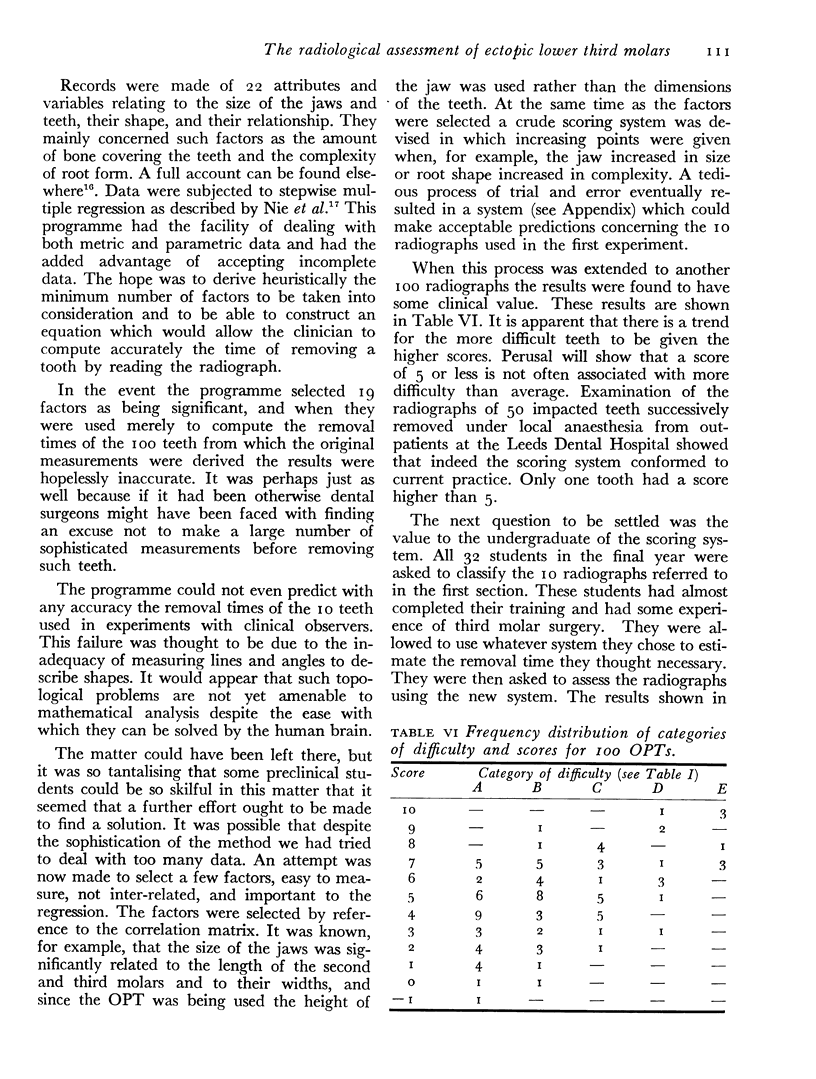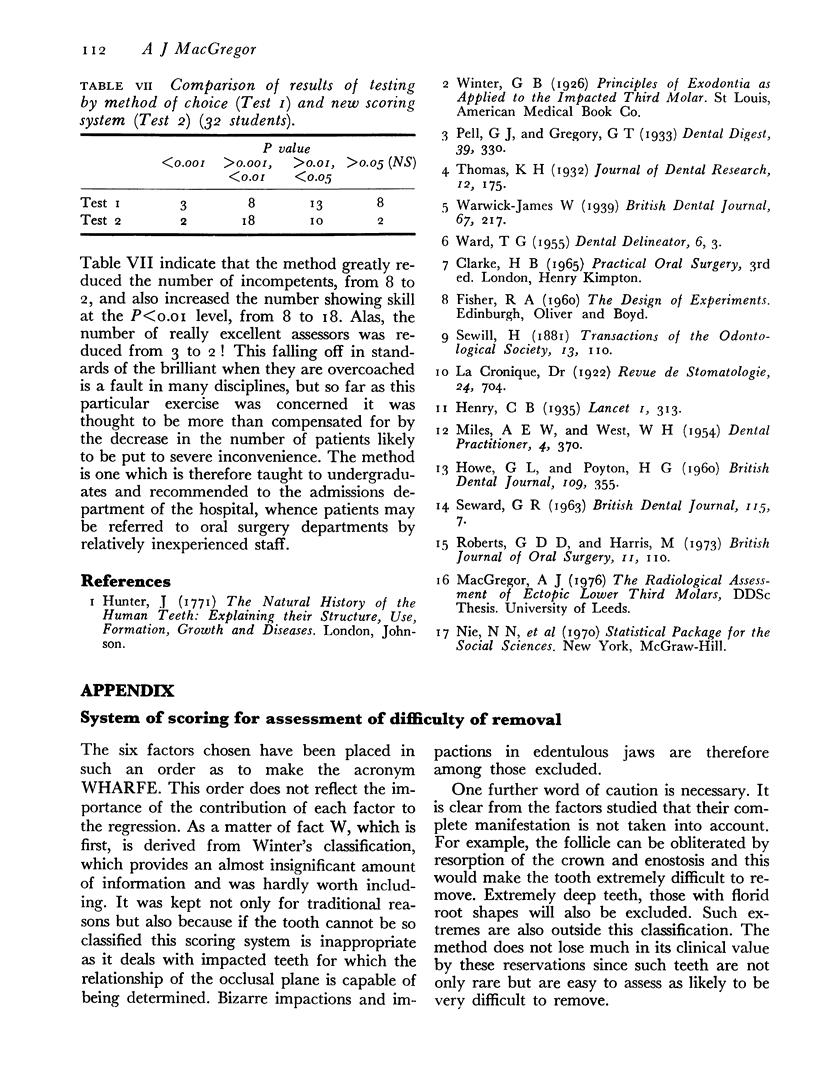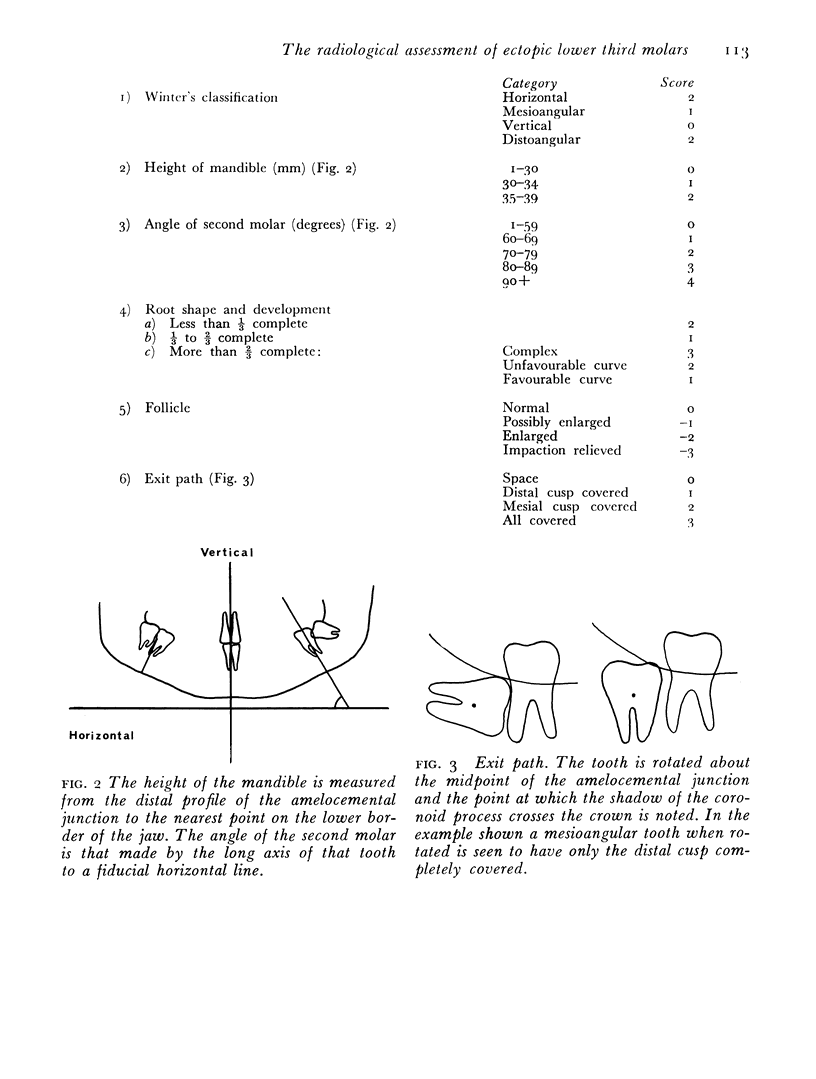Abstract
Experiments using observers ranging in experience from undergraduates to consultants showed that the orthopantomograph can be used satisfactorily to predict the time taken to remove those ectopic lower third molars capable of being put into Winter's classification. When used for this purpose this radiograph compared well with the lateral oblique view of the mandible. There were differences with the intraoral view, but it could not be certain which was superior. The value of the orthopantomogram in predicting impaired postoperative labial sensation was tested. It became apparent that there were cases in which the nerve was clearly at risk and others in which it was clearly not at risk. Variations in the anatomy of the canal and the quality of its image could give rise to doubt, some of which could be resolved by taking intraoral views. An unsuccessful attempt using analysis of multiple regression was made to select and quantify those features of the radiograph important for predicting the time taken for removal of the teeth. A simple points scoring method was evolved which agreed with current practice and was capable of being used effectively by undergraduates, some of whom had made inadequate assessments hitherto.
Full text
PDF